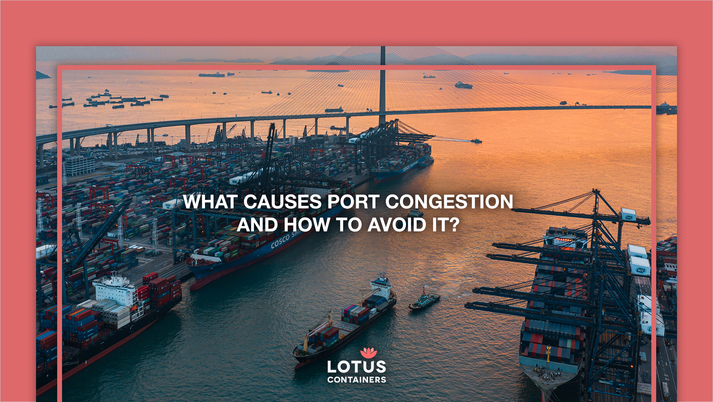Global trade capacity seems to face a bottleneck due to interminable port congestion. Much to the distress of traders’ port congestion grew nearly 7% in 2021 cutting out 11% of global containership capacity. Although in 2021, it was predicted that by 2022 Q2 port congestion will unwind. The port congestion in 2022 Q1 grew uncertain and is predicted to grow worse further in Q2 of 2022. The intermittent lockdown around the world has made the situation go further in unfavorable conditions. The most devastating factor as the congestion grows in the logistics industry is that there erupts a huge container shortage that causes supply chain disturbance. It is one of the battling challenges faced by the shipping companies.
Asia-based research firm, Linerlytica reported that currently, 10% of the global cargo container ships are stuck in long port queues. Although the port congestion has slightly eased in most of the Asian ports, it continues to touch record high congestion statistics in North America. Even though the media continues to ponder over the long cargo ship queue in Los Angeles/Long Beach in the United States. Both the east and west coasts of the United States suffered the majority of the supply chain bottleneck burn this week.
Meanwhile, the number of ships in the queue along LA/LB port has decreased slightly but oncoming scheduled ships from Asia will not keep the situation positive much longer. Los Angeles/Long Beach saw a slight decrease in the queue this week compared to January but no such relief is on agenda for California port. Earlier there was a report, “container ships are jamming the California coast.” The numbers will solidify the situation on the ground. For example, LA/LB port only had 76 ships in the queue at the start of this week compared to 109 units on January 9.
The port congestion brought another hindrance of voyage delay for logistic agencies. If a ship took 28days fronthaul transit time to sail to the east or west coasts of America from Asia in November 2021. Now it takes 38 days for the ship to sail the same distance, another ten days added to their routine schedule. This has brought mayhem in container shipping industry.
The congestion remained an issue in the US since October 2021 which later spread to the majority of North-American ports. This will escalate further in March and April.
Sea-Intelligence, a Danish supply chain research company has cited two major reasons for the additional burden on port queues in North America. Firstly a large number of vessels deployed from Asia and increased small vessel deployment along the North-American trade lane.
Alan Murphy, CEO of Sea-Intelligence analyzed, “The numbers point to a critical situation in coming months for the entire North America. There will be a 40% increase in ships deployment from Asia alone and a 60% increase in the number of vessels on North American coastlines. This will pressurize the port infrastructure further adding to the ship queue.”
Meanwhile, voyage delay has been an issue for ships sailing in the Asia-North Europe route. There will be an additional 17 days journey for a ship for a roundtrip to west sailing from central Asia. Much of the additional time will be lost while waiting in the queue.
The global supply system logistic giant, Kuehne+Nagel’s online platform Seaexplorer has developed a congestion hotspot chart in the coming weeks. The hotspot chart covers all the major ports around the world including Los Angeles, Long Beach, Vancouver, Hong Kong, and Shanghai. Excluding these, the hotspot chart predicted significant disruption in the ports of Oakland, Seattle, New York, Prince Rupert, Savannah, Ningbo, Shenzhen, and Rotterdam. Seaexplorer has also hinted at a much longer wait time for maritime container ships in the coming weeks. This prediction comes in view of an increased wait time in recent times. The wait time grew sharply from 11.56m to 12.32m days in just the past three weeks.
The intermittent Coronavirus surge and consequent restriction are some of the reasons behind the ongoing port congestion. As the world eases restriction, the manufacturing industry gears up to its usual capacity. The trade demand grows by several notches which is another reason for more ships in the sea. More ships mean delay, disruption in the voyage schedule, and bottleneck in voyage lanes. Especially the number of small ships in the sea is taking up more logistic efficiency and fronthaul transit time. These are some of the prominent reasons for adding long queues in ports all over the world.
Ships are trying to avoid port congestion. However, the aforementioned issues will keep the situation going in a not so favorable direction at least for this year.




